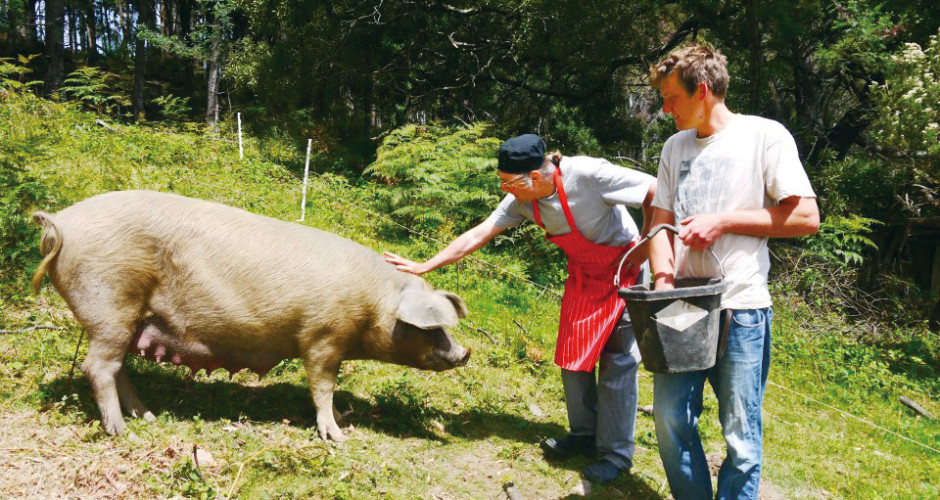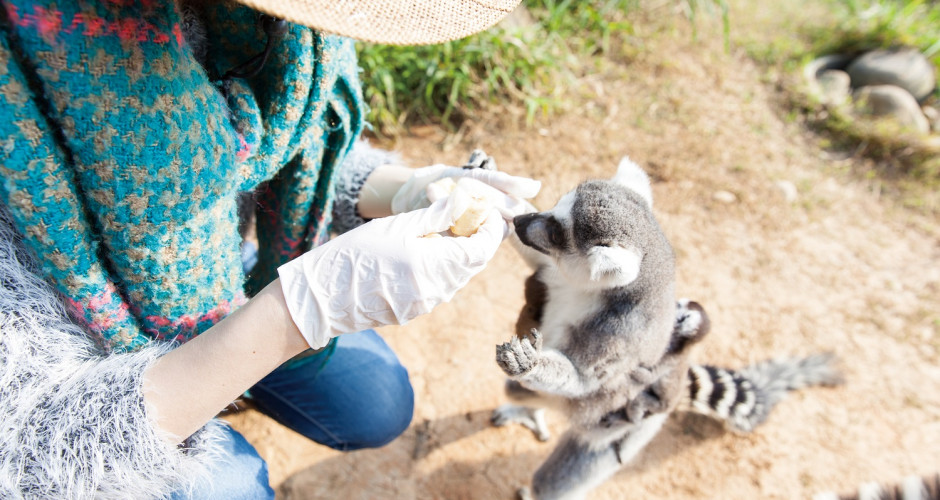The Agricultural Roots of Taiwan— The Story of an Ancient Irrigation Ditch of Ciharaay
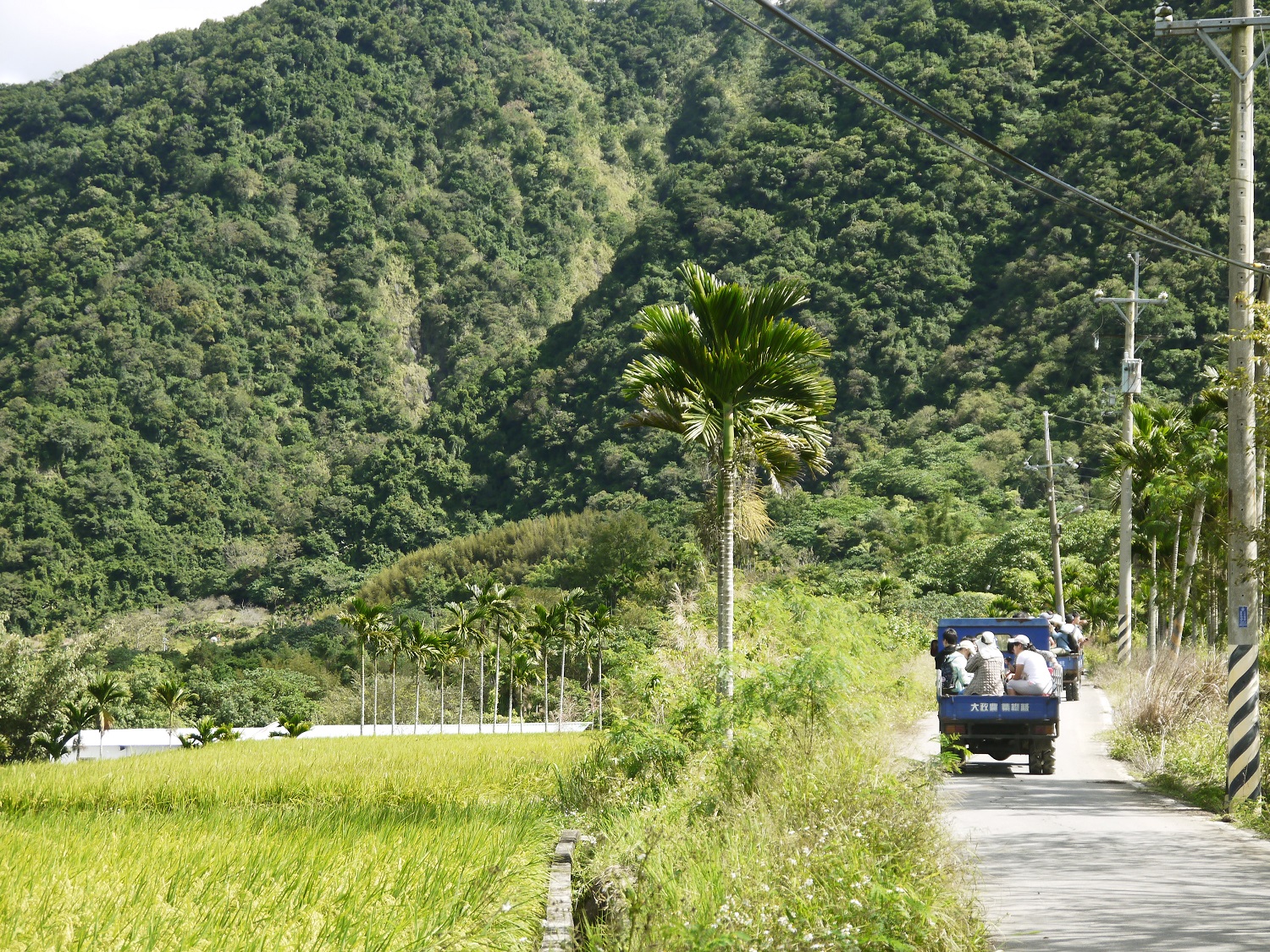
Cilamitai is an indigenous Amis community in Fengnan, Fuli Township of Hualien County, located between Hualien and Taitung. With local lifestyles, culture, and natural environment, Ciharaay of Cilamitai perfectly portrays a “socio-ecological production landscape.” Some people may wonder where the name “Ciharaay” comes from. “Hala” is the nickname local people gave a type of migratory fish found in clear waters called Hemimyzon taitungensis. So, this species is considered the indicator for water quality. “Ciharaay” means “the place that has Hemimyzon taitungensis” in Amis.
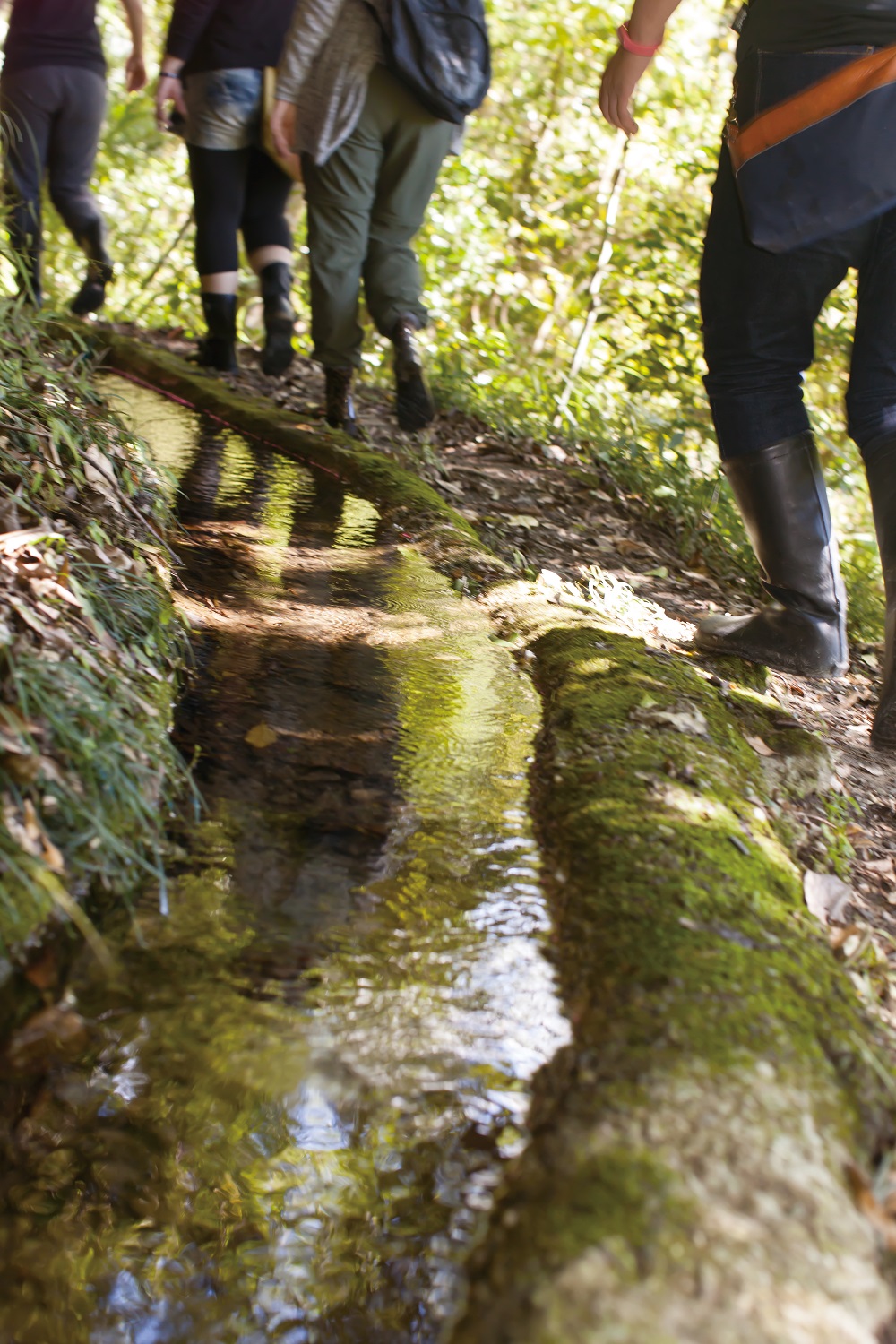
Let’s go! Come along with O’right’s team of reporters and visit a few spiritual figures of the tribe to hear their story with the land and get an insight into the wonders of Taiwan.
Lameru: Scholar, Local Youth and Pioneer
Lameru is a young man from Ciharaay who is currently pursuing a PhD in geography. In his free time, he would go back to Ciharaay to promote the development of his hometown, devote himself to environmental protection, seek the tribe’s tradition of mutual help and trust, and preserve its natural environment. During the interview, the reporters would wonder, “What makes a young man like him, around our age, to be so adamant about protecting his tribe?” Perhaps his motivation came from witnessing his parents struggling to make ends meet at a young age, or perhaps it’s his determination to keep fighting and never give up. Step by step, Lameru brought awareness for the community along with a few other local youths such as helping the Mennonite Social Welfare Foundation with adult day care service and engaging in the preservation of cultural landscape and the production and marketing of natural agriculture industry in Cilamitai. Lameru is always more than happy to humbly and sincerely share everything about the tribe. No wonder he’s such an inspiration to the tribe people, motivating them to take action in protecting the land.
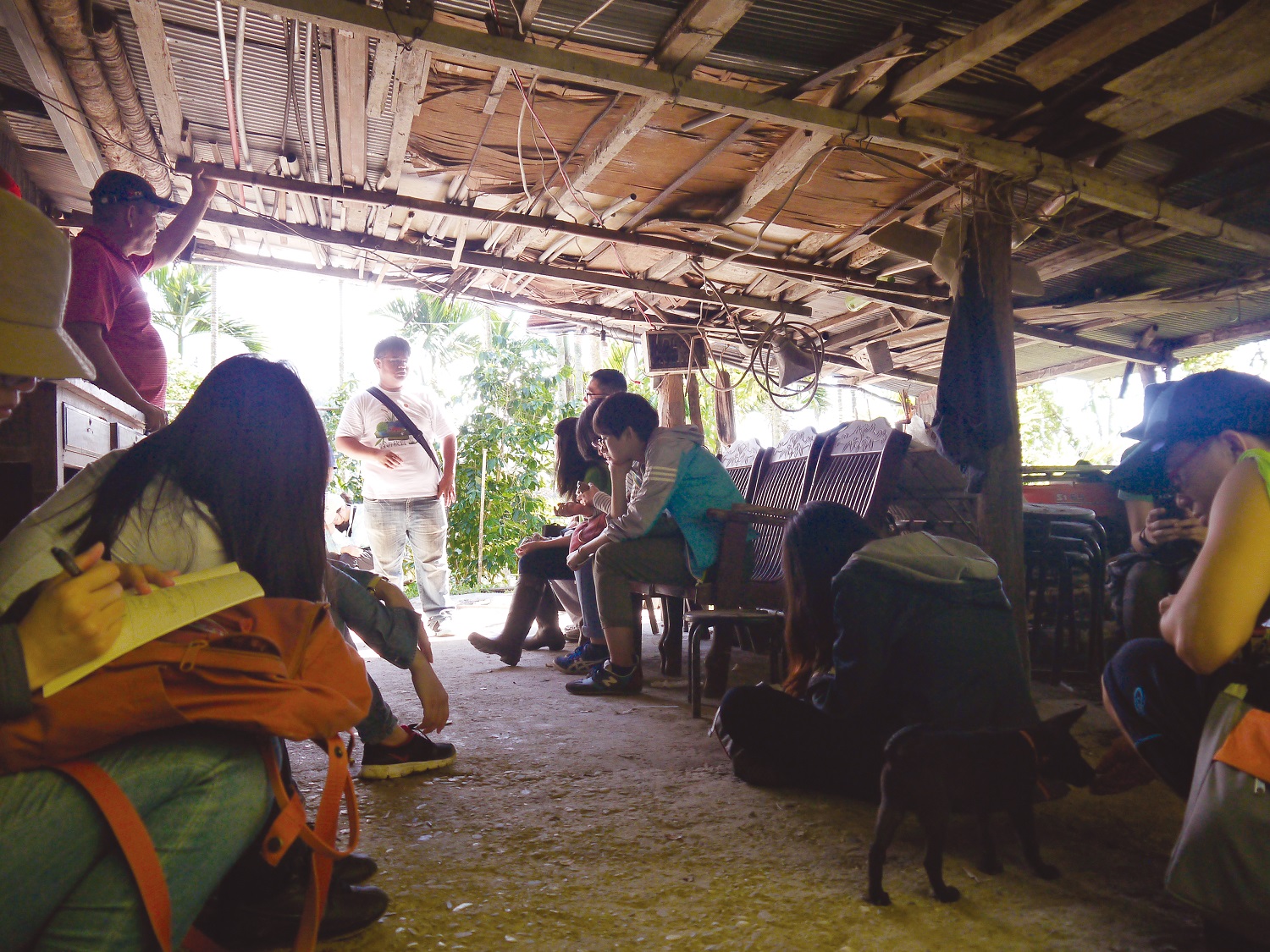
Photo /// Lameru shares how they preserve this land and connect the people and landscape
Piyaw: Peasant Woman and Dream Seeker Returning Home
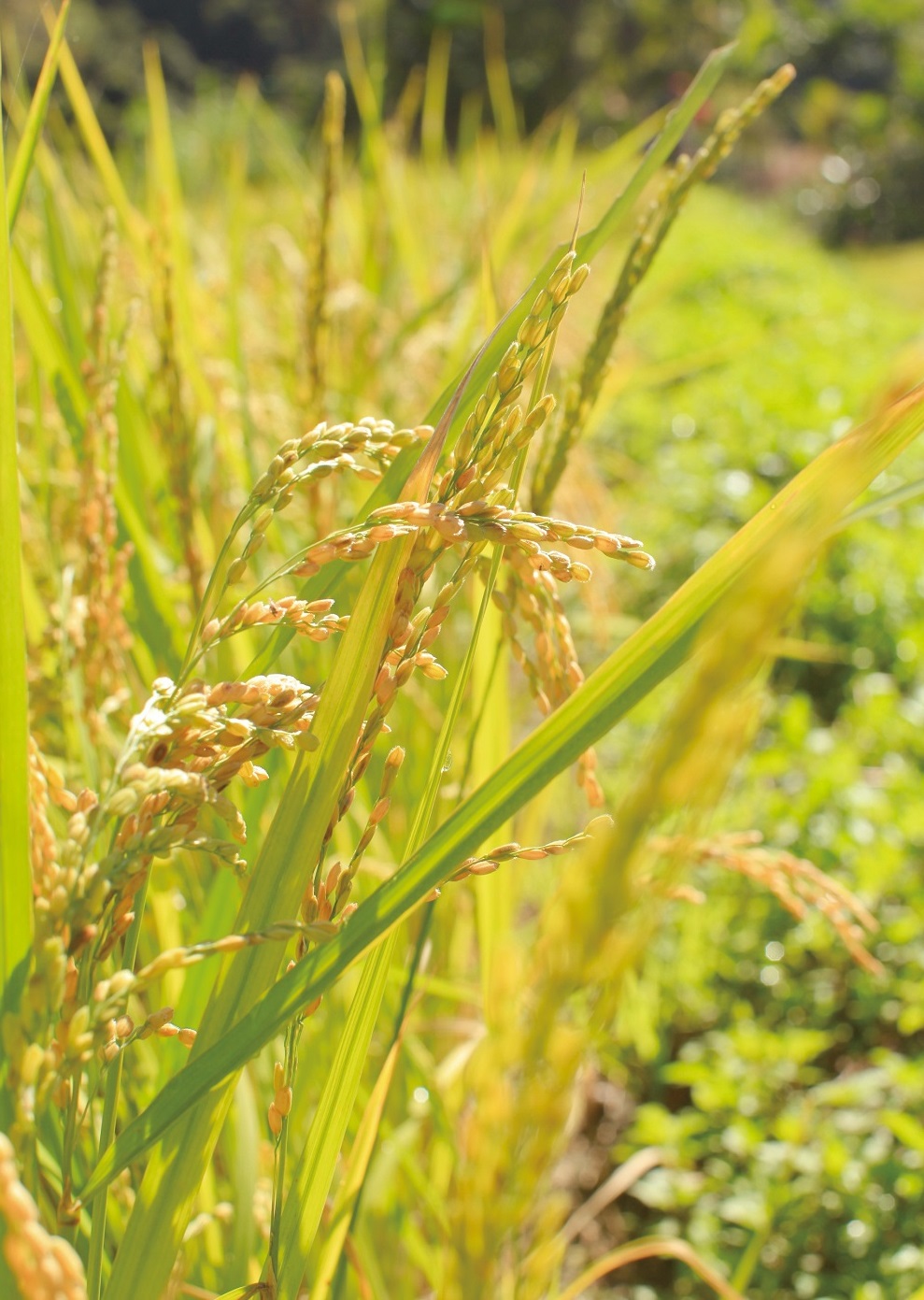
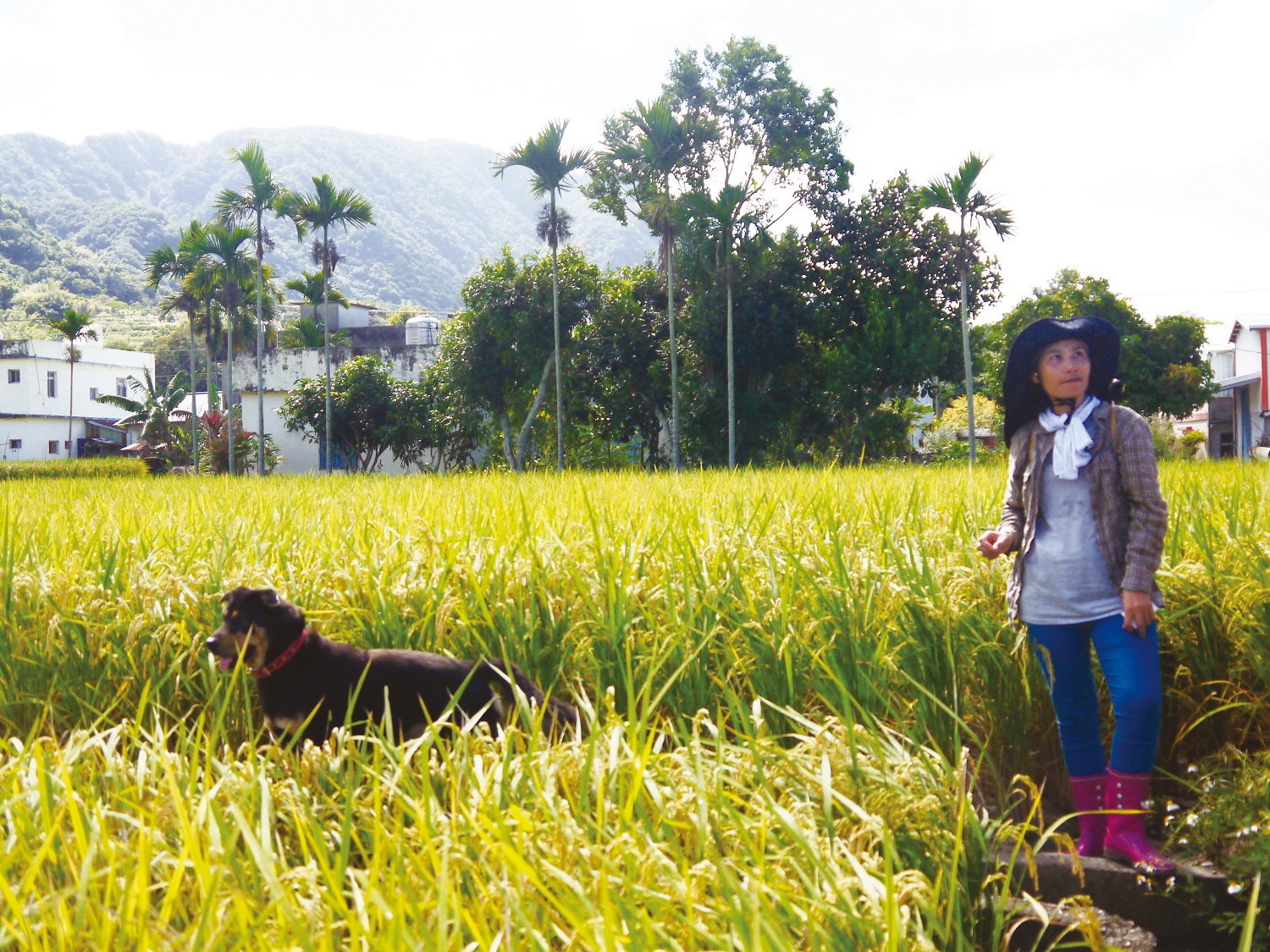
Photo /// Piyaw explains their transition from conventional to organic farming and demonstrates how they drive away planthoppers with dogs
After leaving home, Piyaw began serving as a guide for a national park, a job not very common among women! When her parents became too old to work on their farm, Piyaw felt compelled to return home and take over her family farm. Listening attentively as Piyaw shared her story on how they transitioned from conventional farming to organic farming and the challenges they’ve had to overcome, it is hard to imagine that it has been only 3 years since she has returned to Ciharaay. Planthoppers are enemies in paddy ecosystems. These natural enemies feed on the nutrients on paddies on hot and dry days, and could even cause paddy rice to wither rapidly in a short period of time. As organic farmers, Piyaw can only choose to “experiment” by adopting natural methods to make up for all the work she has done over the year. For example, she would plant threeflower tickclovers for its nitrogen fixation properties as well as the capability to improve soil fertility and increase the number of parasitoid wasps, ladybugs, and long-jawed spiders to remove pests. Or, she would use shallow water for irrigation to drive away planthoppers to the ear of rice and then remove them by hand. While these methods are very laborintensive, Piyaw, seeing how living organisms coexist in the lush green, golden paddy fields, thinks that all the work is worth it as it reminds her of her childhood.
Fasong: Former Second Mate Turned Hunter Back on Land
Back in the days when economy was still weak, Fasong, faced with financial burdens, traveled all over the world, across the seas, on a fishing boat as a second mate in hopes that one day when he returns home, he will be able to give his parents better lives. Eventually, that day came and Fasong’s parents sat him down and asked him to choose to go back to sea or stay on land. Fasong decided to stay. After all, the reason for going out to sea was to earn money and make a living, but after decades away from home, he can finally return to his hometown, Ciharaay. However, Fasong felt a little disappointed after he moved back home. Although the elders continued to work hard on the farm, unfortunately the younger generation did not learn to appreciate the land, thus making it difficult for them to be retained. As a result, Fasong became more determined to support Lameru’s aim to maintain Cilamitai’s cultural landscape and preserve its natural agriculture sector.
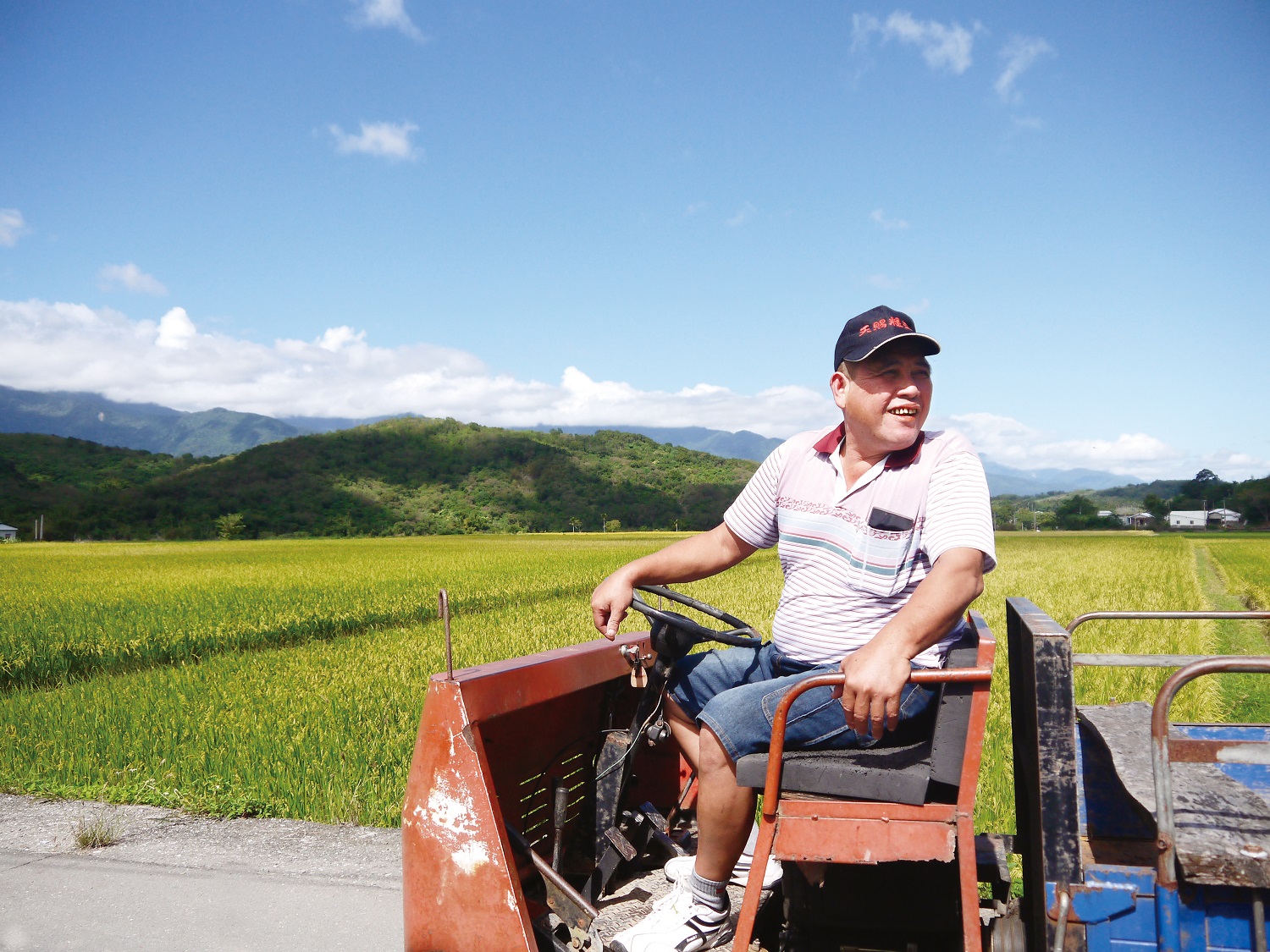
Photo /// Fasong adopts the Natural Farming approach to care for the terraced fields surrounded by mountains
Even after returning back to the land, a part of Fasong still belonged at sea. However, this time, he no longer engaged in fishing; instead he began serving as the head of a 100-year-old irrigation ditch. This irrigation ditch was originally just a source of drinking water, but during the Japanese rule period, the Japanese saw the potential of this precious water source and began to repair the irrigation ditch to use it for crop irrigation. It was only after the government of the Republic of China moved to Taiwan and paddy cultivation methods became widespread that the Fuli Township’s destiny with this heavenly food began. As the head of the irrigation ditch, Fasong was responsible for sweeping away fallen leaves, preventing clogging, and maintenance. Once a year neighbors would volunteer and assist in repair work under the instructions of Fasong. Over time Fasong developed good team chemistry with others, fulfilling Cilamitai’s promise of harmony in the tribe.
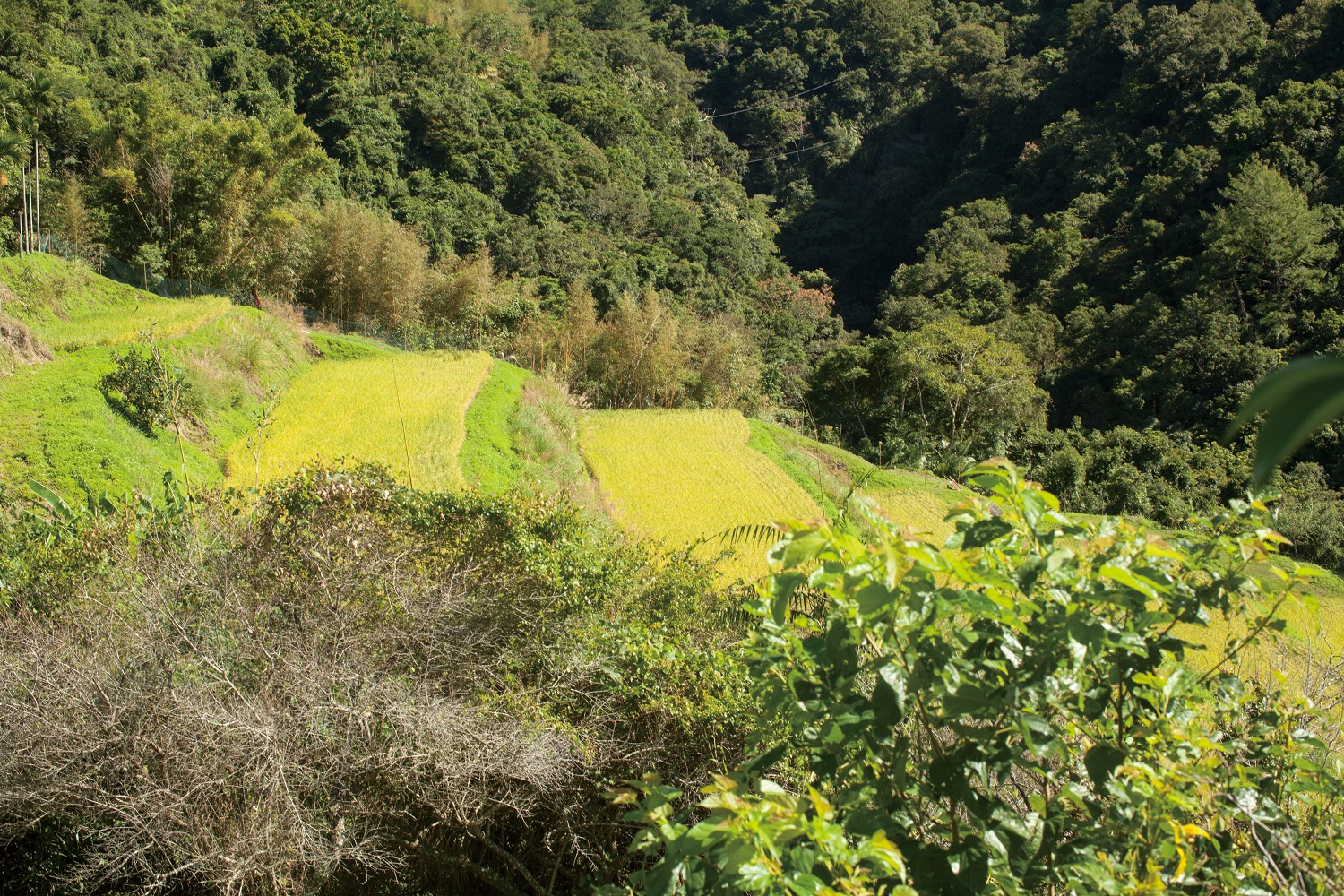
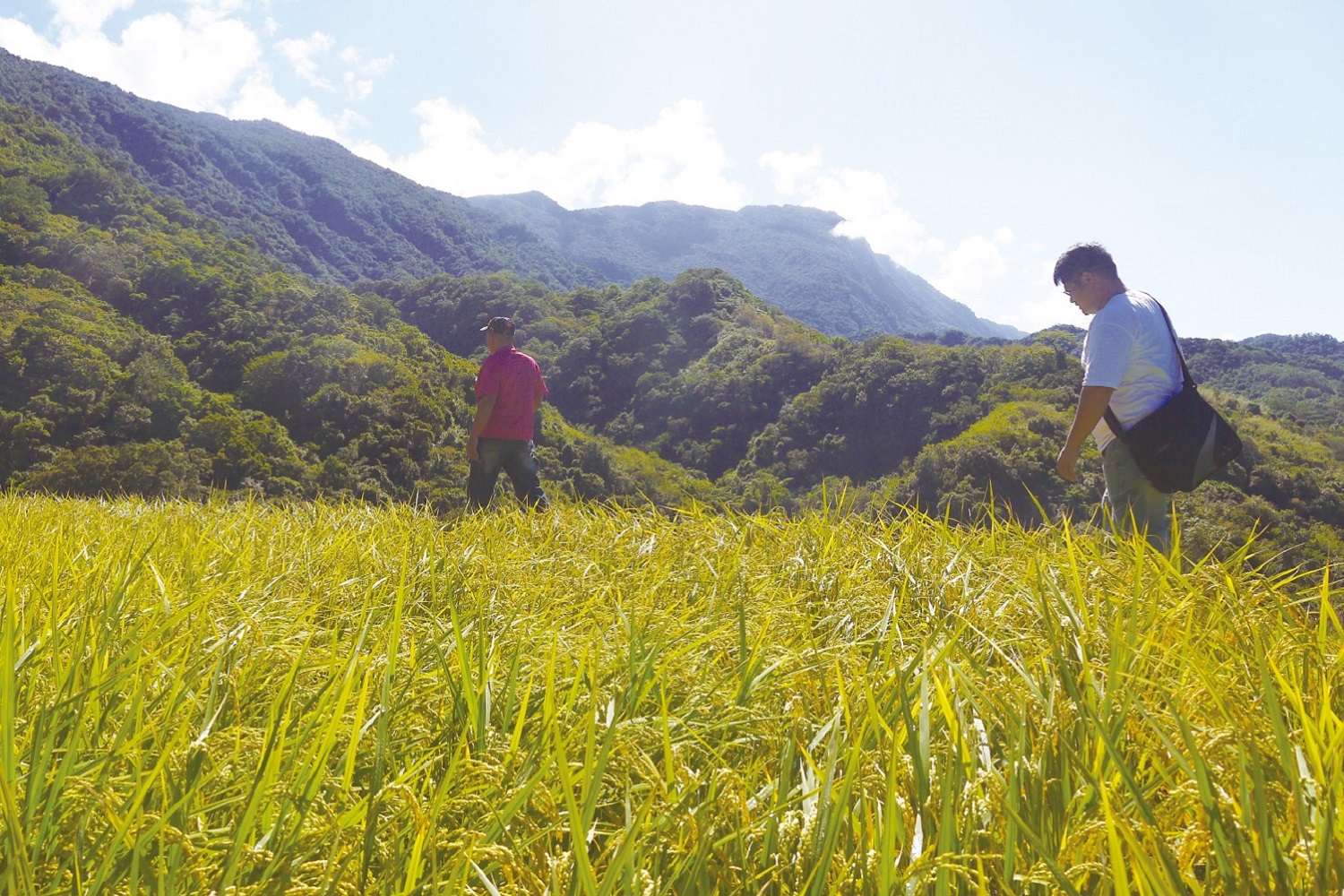
Overlooking to yellow rice fields up on the mountains in autumn, the season of the harvest, Fasong joyfully announced that by the end of the month they can start harvesting Fuli’s best quality of rice. However, delicious food comes with a price. Planting crops on terraced fields on the hilltop is already more difficult than planting on flat land. What’s more, the effort and labor it requires is double the amount needed on flat land! Fasong adopts the Natural Farming method, using just bokashi to improve soil fertility as well as no fertilizers and pesticides in order to restore biodiversity. Countless tadpoles swimming around and frogs jumping about indicate a healthy field. Although it’s tiring picking up channeled applesnails every day, he hopes to use natural farming approach on terraced fields to improve the biodiversity of this cultural landscape.
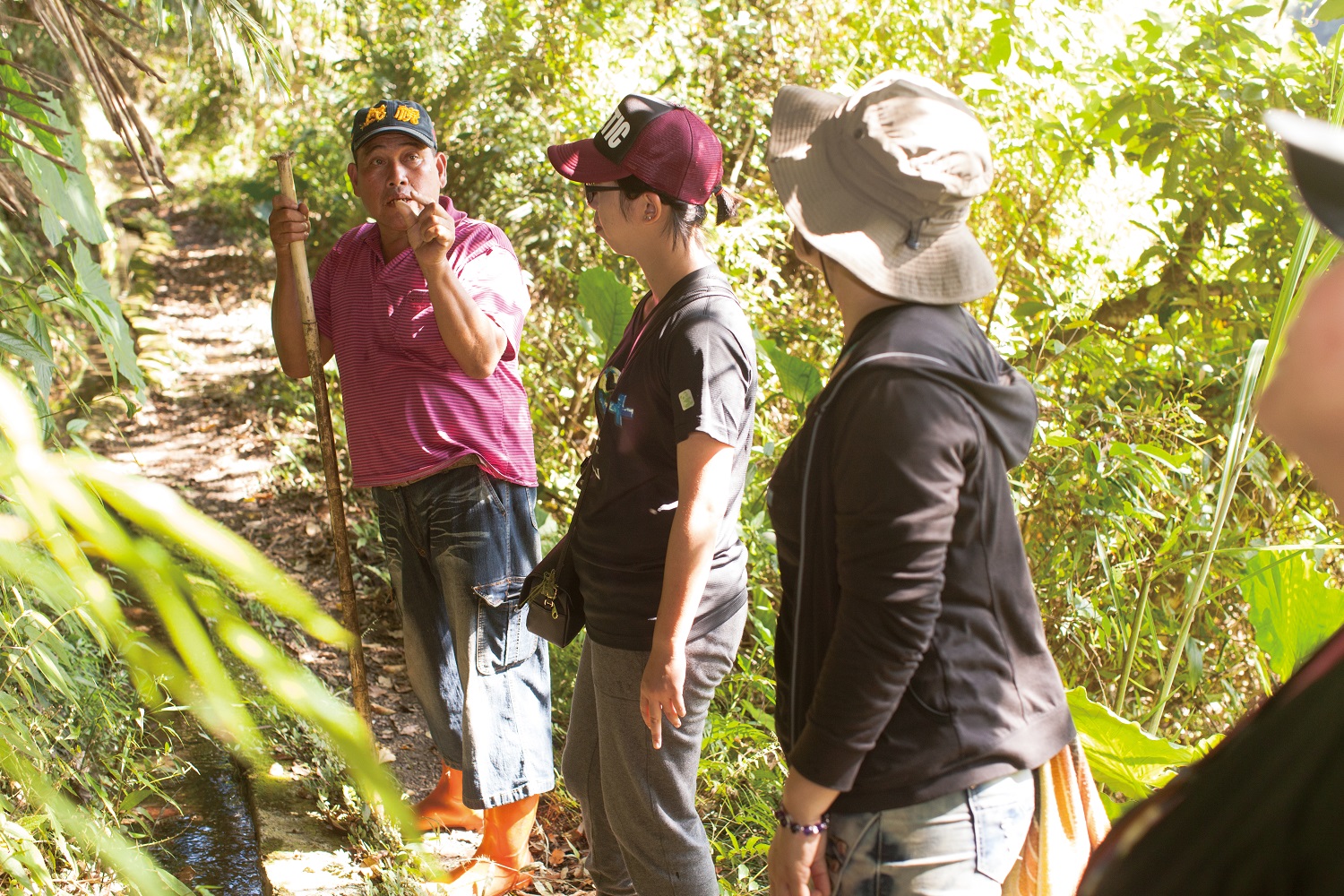
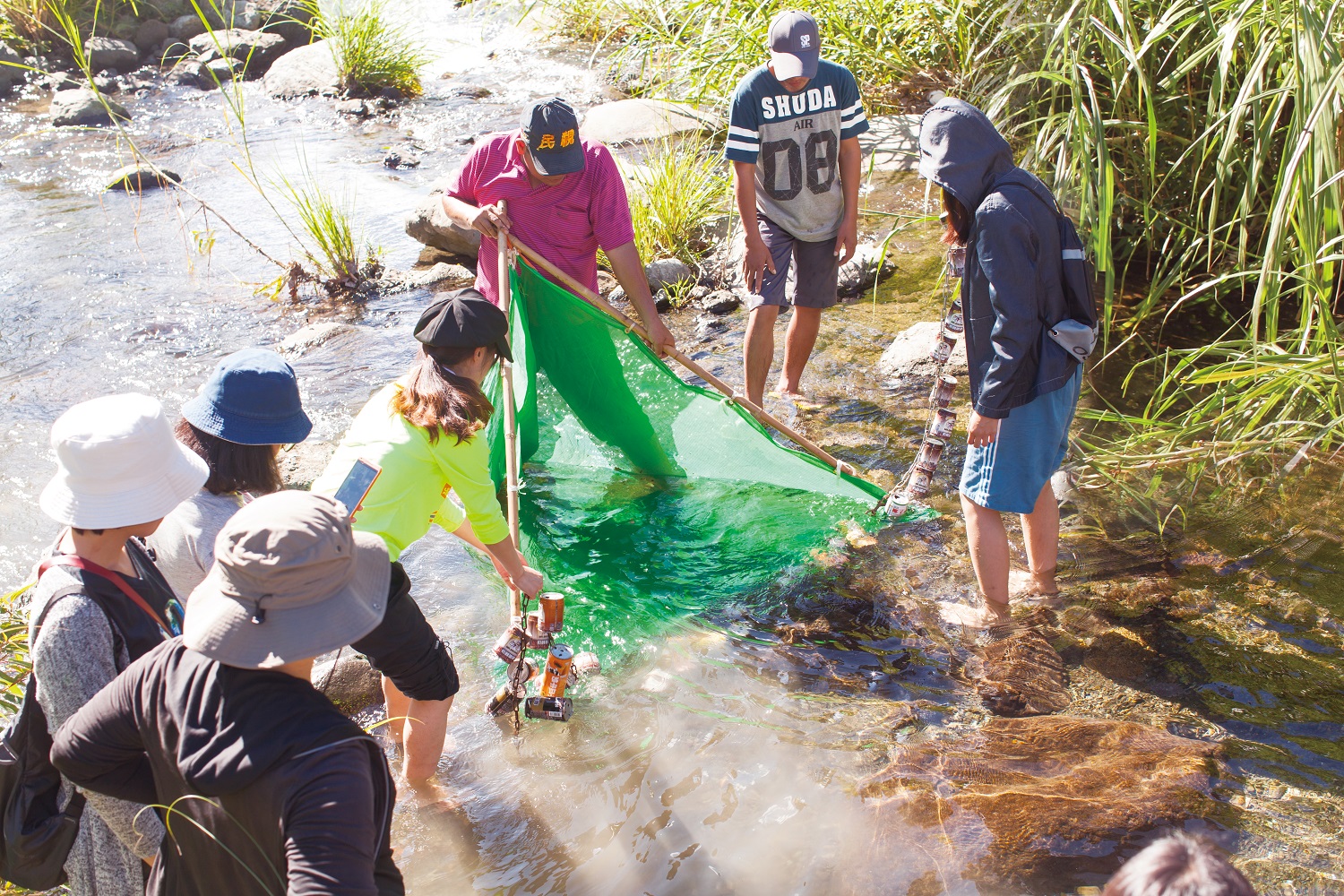
Photo /// Local tribe people giving a tour around the irrigation ditch and share how hunters work in the woods
On this land, no pesticides are used to keep rivers free of pollution. Streams are sealed regularly to restore its ecosystem. Here, Taitung’s Hemimyzon taitungensis, or “hala,” designated by the government as Class II protected species, continue to swim freely. At the end of the reporters’ trip, Fasong taught them how to use the most traditional way to learn about Hemimyzon taitungensis; that is, by fishing as a team: two people hold onto a string of tin cans to drive away fish, while another group of people waits for fish with a fishing net and a bamboo bucket. This is just a way to educate them on traditional survival methods. The team was astonished by the wisdom of local residents and admired their perseverance and the hard work they put in to maintain the tribe’s natural ecosystem.
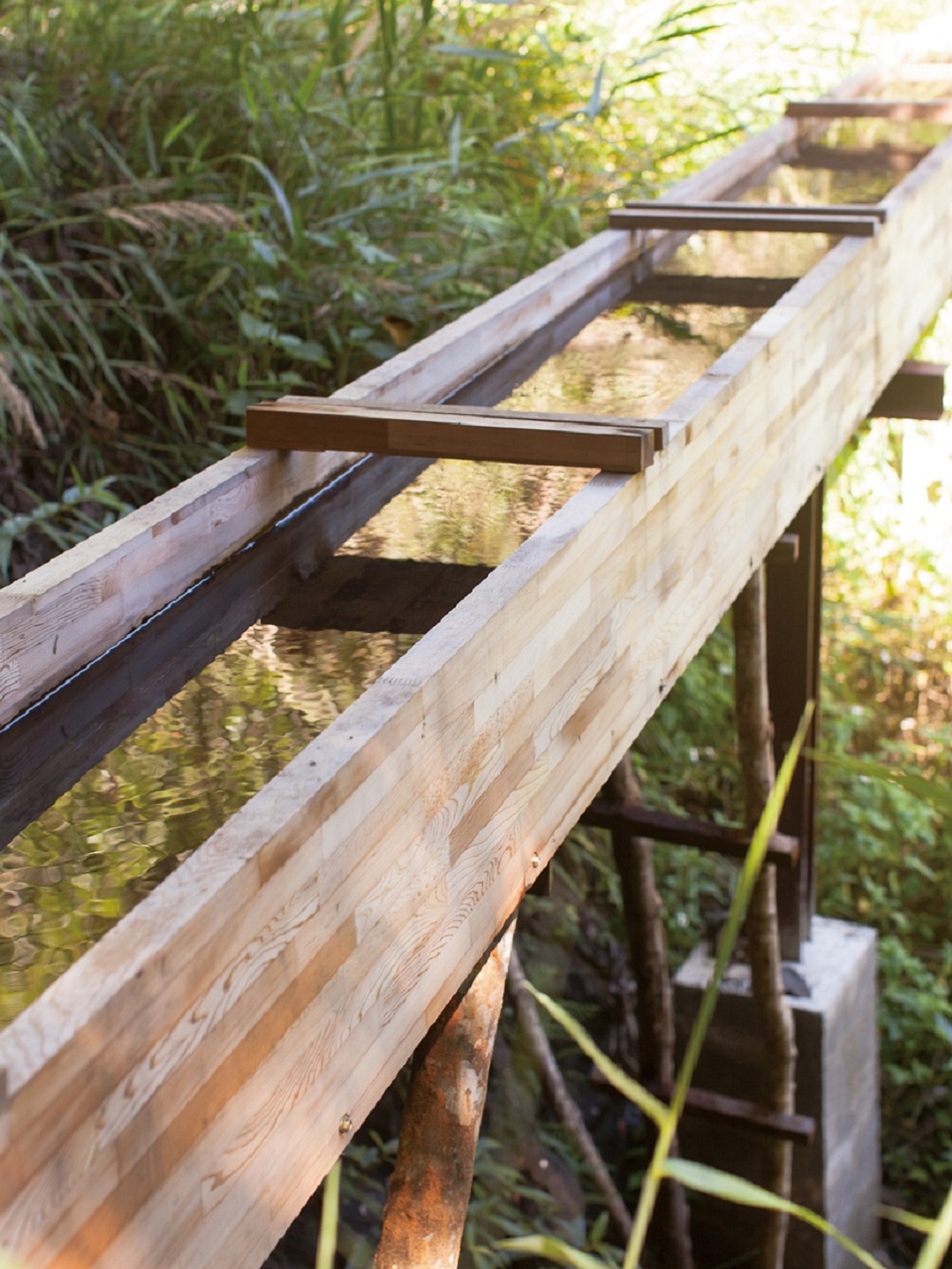
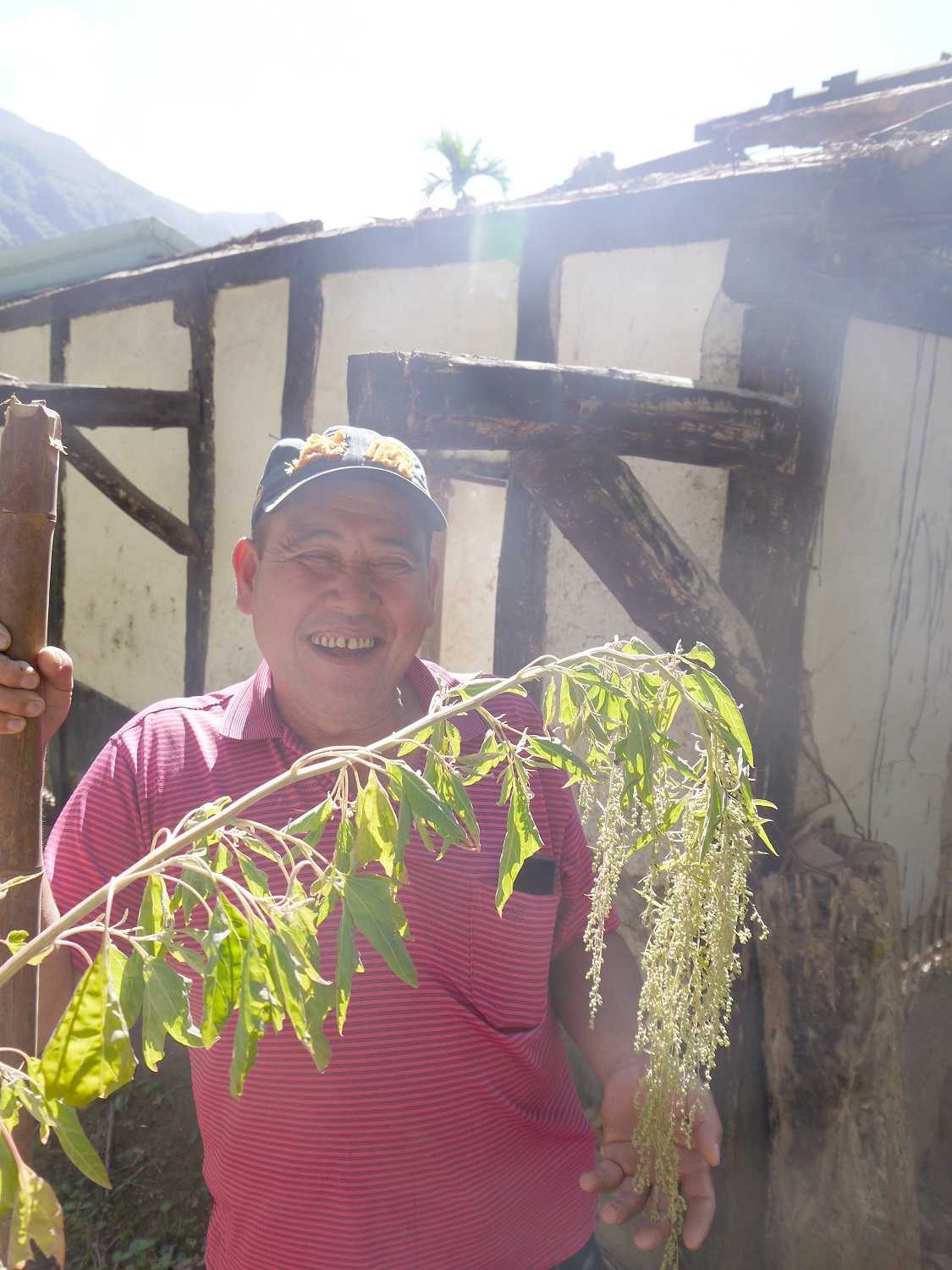
People Coexisting with the Land – The Most Beautiful Scenery in Taiwan
Local residents have dedicated themselves to preserving and maintaining the natural environment. As a result, Ciharaay was registered as a cultural landscape of Taiwan by Hualien County Cultural Affairs Bureau according to the Cultural Heritage Preservation Act in May 2012, becoming the only cultural landscape out of 43 in Taiwan to have both irrigation facilities and water terrace rice-fish farming systems. O’right’s team of reporters felt extremely honored to have seen the core value of this cultural landscape through the eyes of Lameru, Piyaw, and Fasong. Here, a group of tribe people continues to preserve and use this land in hopes that future generations are able to enjoy the natural landscape even years later. Thanks to them, the world is a better and more wonderful place. Thanks to them, future generations can appreciate and be touched by the gift Taiwan has exclusively bestowed upon them.

